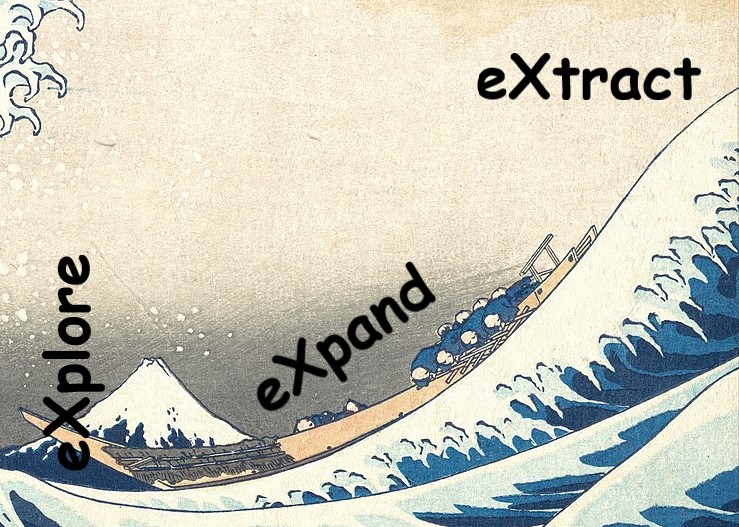Many people will have read one of Kent Beck's articles on 3X or eXplore-eXpand-eXtract or The Product Development Triathlon. Many people have taken to explaining Kent's work on their own sites, sometimes helping, sometimes not, sometimes even ranking higher on search engines than the original articles!
I have an unpayable debt owed to Kent, his work started me off on a journey of discovery that forever changed how I practice my craft. I count him as one of the handful of people who in this field have had the most effect on my professional career.
But even the best of us are blind to things that our position, our background, our experience and our culture either deprioritise, hide away or even make taboo. I'm going to argue that Kent isn't wrong per se, but rather his model is only half the story - perhaps in a similar way that Rutherford's nuclear model of the atom was useful, but was later superceded by other models like Bohr's and Schrodinger's which built further upon the model and increased it's predictive power by being able to explain effects like spectral emission and absorption patterns.
Here we see the 3X wave, eXplore, eXpand, eXtract, against the background of a famous Hokusai ukiyo-e woodblock print. As the observant may notice, there is something missing from this picture.
So, what is missing in 3X? Simply put, 3X only talks about growth. This is a facet of the perennial myopia of Wall Street and Silicon Valley, a company is only interesting as long as it is growing, and the faster it grows, the better.
This leads us to the following kind of diagram:
But growth is just the start. Nothing grows forever. Eventually it stops growing, it declines, it grows ill and eventually dies. We mourn, we reflect, and we move on. Hopefully retrospecting on their departure we realise the positive effect they had on our lives.
It is clear that 3X is just one half of the cycle, and that in actual fact we have another three stages to enumerate:
eXhaust, eXpire, errr... eXhume? eXogenesis?
Well, the correct naming of things is hard. Besides which, XXXXXX just sounds like an Australian beer.
Including the missing three phases completes the diagram:
Despite the best attempts of the Product Owner and the Team, the product is past its best. Heroic efforts may be made to improve matters, but inexorably the decline sets in. Customers gradually leave, profit margins decline, the product becomes more and more difficult to work with.
Most of us have worked on products or projects that are in this stage, some of them haven't even gone live or been published. I worked on a project that ran for almost a year with more than sixty people employed on it (quick sums put this at between GBP 5m and 10m) and the whole thing was cancelled two weeks before it was due to go live. Sometimes we refer to these as 'death march projects'; Edward Yourdon even wrote a book about it:
"The author's plain-spoken observations on the dysfunctional organization -- the Machiavellian politics, naive optimism, lust for power, fear, and sheer managerial stupidity that guide so many death marches -- make for a refreshing change from other project management books." -- Amazon review
Palliative care. Preparations for closing down. Eventually the project/product/org dies/is shut down, and the team is disbanded. Some people are sad - a few rejoice, because the decline was hard to bear. For all there is a relief that it is finally over. For some companies this stage may take years or even decades - Kodak, PanAm or IBM; for others it happens with merciful swiftness - Lehman Brothers, Arthur Andersen or Enron.
What happens to team members, employees? Other products, other projects, other companies. Life goes on, even if the product, the team or even the organisation dies. The people, like a body, return to the earth and are reborn anew as a part of new organisations, and new products.
For me, this realisation that 'hyper-growth' is not actually the final stage of a product or organisation was an eye-opener. Now that I have identified the pattern I see it everywhere. For every startup there is a declining giant, for every growth-phase company there is a company quietly breathing its last, and for every late-stage cost-cutting bureaucracy there is an organisation being dismantled, asset-stripped, or undergoing bankruptcy proceedings.
It is long past the time that we consider what happens after 'success' and start planning for it, for all our sakes.

